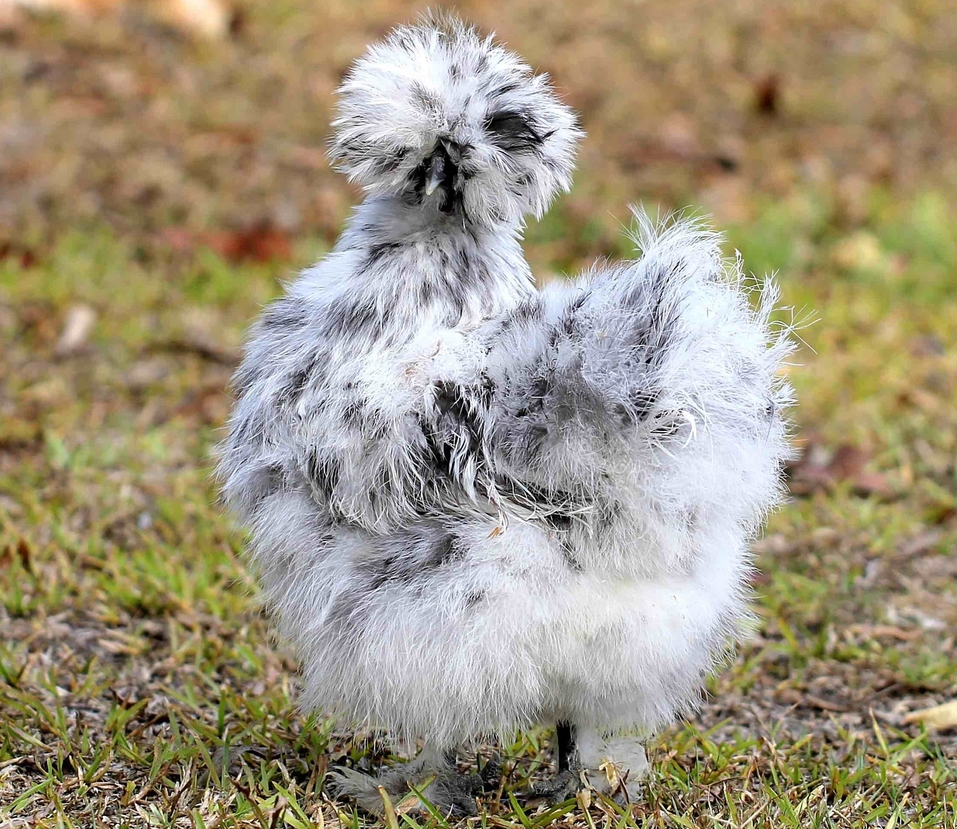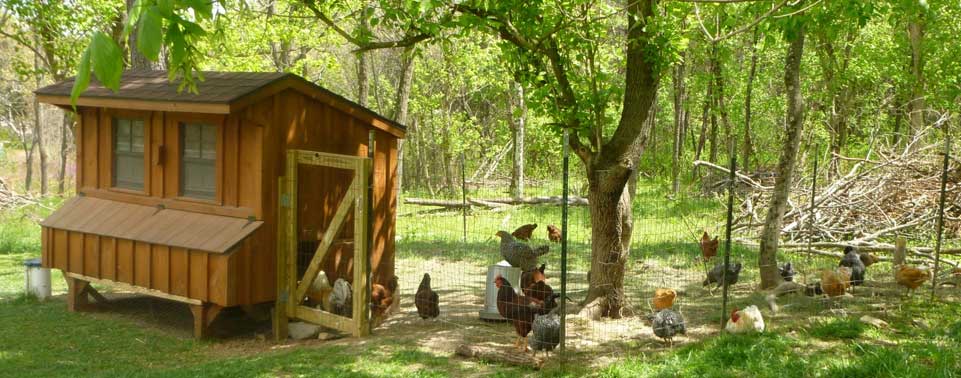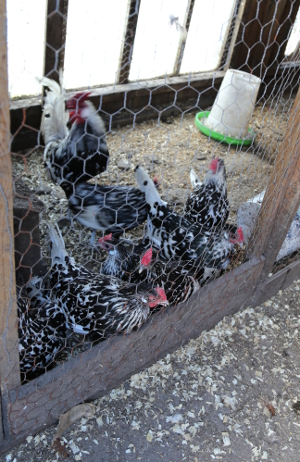What is the best floor materials for a chicken run?

What is the best material for a chicken run floor?
If you have ever slipped in the mud in your run or put your foot through the floor of a coop then this is for you.
Chicken runs often end up just a forgotten bit of enclosed space.
The best material for a chicken coop or run floor is one that is hard wearing and easy to clean.
I have most types of flooring around here, I have tried most of them over the years. I have sand, wood-chip, wire, solid wood, linoleum and dirt in various coops around my fields.
Each has its pro's and con's and it all depends on your needs.
Dealing with muddy chicken runs in wet weather can be dangerous, a few years ago I fell carrying a sack of chicken feed and broke a bone in my foot.
Below: A raised coop gives a dry run space underneath.

What materials can you use in a chicken coop?
You can use just about anything provided it is sturdy, easy to clean and fulfils your needs.
I have plain old dirt floors, ones covered in wood chips, sand, solid wood, wire and even one made from an old linoleum kitchen floor.
Wood is generally the choice for the floor of a coop and sometimes the run as it is easy to build with and comes in a selection of sizes and types.
Is there a healthier option for coop and run floors?
There are two things when it comes to coops that keep a chicken healthy, dry and dust free.
The standard coop floor seems to be plain, unfinished plywood topped off with a nice deep layer of shavings and providing it is cleaned on a regular basis and kept dry and dust free there is no reason to worry that this type of flooring would make your chickens sick.
I add Diatomaceous earth, or DE, to the shavings to dry things out and extra shavings as needed and turn them over frequently.
A rubberised sheet or plasticised kitchen floor type covering would be an improvement.
What is the best ground cover for a chicken run?
The best ground covers for chicken runs and coops are those that are dry and well drained.
Ground covers for chicken runs include:
- Hard wood chippings,
- Gravel,
- Grass, if you can keep it alive.
- Sand, we call it sharp sand here in the UK, it is a mix of small size grains.
If I am asked I always suggest a chicken run should be covered to keep the weather out.
Below: For me the ideal ground cover is a natural grass one. I am lucky enough to have a few runs that are big enough to keep grass growing.
My next door neighbours gave me such a hard time when I put gutters up like what is on houses. It really does make a difference to channel the water away from the coop and run.
How do you clean a chicken run floor?
Just shovel the used bedding out of the coop and/or the run, sweep up the last few bits and replace. Old bedding can go in the compost heap or be spread on flower beds
How often depend on how many chickens you have and the size of the coop and run. The smaller the space the more often you will need to clean.
The use of poop or droppings boards under the roosts will make cleaning easier by collecting what the birds produce overnight in one easy to clean spot.
What are my coop floors made of?
Wire: The wire virtually cleans its self but doesn't allow the birds to scratch, peck, and dust during the day.
If you don't let them down on ground this leads to over grown toe nails and beak which can cause major problems if not cared for.
The wire also helps prevent the hens from going broody if there is no nesting box.
It needs to have the right size mesh holes for the size of chickens you keep. Too big and the feet may slip through and too small and they may get stuck.
Wire floors are better for smaller birds like Serama and bantams.
Another downside of wire coop run floors is they bow down over time and stretch.
Sand: Sand is my favourite floor covering. It is cheap, very well drained and easily disposed of when you are done with it. Plain builders sand, not the really fine stuff used for making mortar.
Below: My Spangled Hamburgs on a sand floor.

You just add a couple of inches over the floor and it can used in the coop and run for continuity.
Wood floors: These are good in certain areas and bad in others. The worst thing about them is the upkeep of having them clean. It also allows mice and other bugs/parasites to roam around freely causing feather damage if not treated correctly.
Wood-chip: You can get a ready supply from a tree surgeon or the bulk bag stores. I pay about £15 or $22 a cubic metre. This stuff is good because it supports insect life and the hens will love rooting through it hunting for bugs.
Earth: My Dirt runs are covered and dry. I put in grass cuttings or leaves and they scratch them into compost. I can't remember the last time I've cleaned the run. It just looks like compact dirt and there's no smell.
I have quite a few dirt floors and I find them OK provided they are kept dry. Hens will go broody and eggs do not get damaged nearly as much as on wire. It also prevents toe and beak growth to an extent.
The bad things are that predators can dig in from the outside and if you have rat and mice problems they make tunnels under the surface. Other than that they can be easily cleaned with a shovel and you can add dirt whenever you need to. It also allows plenty of dusting and scratching time for the birds.
Concrete: I love the concrete floors in my coops and outdoor buildings. I don't have to worry about predators digging under the barns or living under the coops. It's super easy to clean and easy to disinfect.
So, if you're going for a permanent structure, consider concrete. It is cold in winter if you live in that sort of area
Gravel: I have a gravel floor and it's not something I would have any more of. There is nothing wrong with it per se, its just not the best.
Linoleum or rubber sheet: I covered the old floor in my hen-house with cheap plastic linoleum from the overstock store in my area and it really works a dream.
I glued it down, and nailed it around the perimeter, and it does wonderful for keeping the moisture off the wood and makes cleaning out the coop so much easier.
Everything sweeps/scrapes out so much better, and nothing gets packed into the wood grain. I've had no problems with any kinds of parasites, and I caulked around the edges with industrial caulk so nothing gets too hard to clean.
I use pine shavings over it and its such a breeze to clean and disinfect. It wasn't that expensive at all.
Is there anything I should avoid using on floors?
Shredded paper is not good.
Anything that is dusty - avoid sawdust and use shavings instead.
Anything that packs into a solid surface like clay is best avoided.
